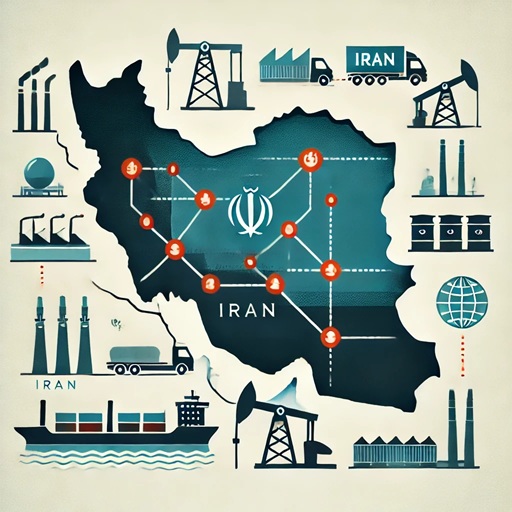In today’s interconnected global economy, international freight and forwarding are indispensable for facilitating trade across borders. By enabling the seamless transportation of goods, freight forwarding plays a pivotal role in supply chain management. This article explores the concept, challenges, and practical examples of international freight and forwarding to provide a comprehensive understanding of the subject.
What is Freight Forwarding?
Freight forwarding is a service used by businesses to manage the logistics and transportation of goods internationally. Freight forwarders act as intermediaries between shippers and carriers, ensuring that goods reach their destinations efficiently, cost-effectively, and in compliance with regulations. These professionals coordinate with multiple entities, including customs brokers, shipping lines, airlines, and trucking companies, to handle tasks such as:
- Packaging and labeling
- Documentation (bills of lading, customs declarations)
- Route optimization
- Cargo insurance
- Warehousing and storage
The Importance of Freight Forwarding
International freight forwarding is crucial for:
- Trade Enablement: It facilitates global commerce by connecting suppliers and buyers across continents.
- Efficiency: Freight forwarders leverage their expertise to optimize routes, saving time and reducing costs.
- Regulatory Compliance: They help businesses navigate complex customs laws and international trade regulations.
- Risk Mitigation: Freight forwarders provide insurance options to protect against losses or damage during transit.
Challenges in International Freight and Forwarding
Despite its critical role, freight forwarding comes with several challenges that require careful navigation. Below are the major hurdles faced by the industry:
- Global Supply Chain Disruptions
Natural disasters, pandemics, geopolitical tensions, and labor strikes can severely disrupt global supply chains. For instance, the COVID-19 pandemic exposed vulnerabilities in international logistics, causing shipping delays, container shortages, and increased freight rates.
- Customs and Regulatory Barriers
Every country has its own set of customs regulations, import/export restrictions, and documentation requirements. Freight forwarders must stay up-to-date with changing policies to avoid penalties and shipment delays. For example, strict compliance with the European Union’s General Data Protection Regulation (GDPR) may require forwarders to handle customer data carefully during transactions.
- Rising Costs
Increasing fuel prices, surcharges, and carrier fees contribute to escalating shipping costs. Businesses often struggle to strike a balance between cost-efficiency and timely delivery.
- Environmental Concerns
With growing emphasis on sustainability, there is pressure on freight forwarders to adopt eco-friendly practices. However, transitioning to greener alternatives such as electric vehicles or biofuels can be expensive and challenging.
- Technological Advancements
Although technology enhances operational efficiency, staying abreast of new systems and integrating them into legacy processes can be daunting. Freight forwarders must adopt tools such as blockchain, Internet of Things (IoT), and AI-driven analytics to remain competitive.
- Capacity Constraints
Port congestion, container shortages, and limited cargo space on ships and planes are common issues. These constraints can lead to delays and increased costs. For example, during peak trade seasons like the Chinese New Year, freight rates can skyrocket due to limited capacity.
Practical Examples of Freight Forwarding in Action
To better understand the challenges and solutions in freight forwarding, let’s examine a few real-world scenarios:
Example 1: Managing Perishable Goods
A seafood exporter in Norway relies on freight forwarding to transport fresh salmon to markets in Japan. The forwarder ensures:
- Proper temperature-controlled containers (cold chain logistics).
- Prioritization of air freight for faster transit times.
- Accurate documentation to comply with both Norwegian and Japanese customs regulations.
By coordinating these factors, the forwarder prevents spoilage and ensures timely delivery.
Example 2: Navigating Geopolitical Tensions
A textile manufacturer in India exports garments to the United States. However, during a period of increased tariffs on certain goods, the freight forwarder:
- Identifies alternative routes or ports to minimize costs.
- Advises the exporter on HS (Harmonized System) code reclassification to reduce tariff impact.
- Ensures compliance with new documentation requirements imposed by the U.S. government.
This strategic approach enables the manufacturer to maintain profitability despite geopolitical challenges.
Example 3: Handling Oversized Cargo
An engineering firm in Germany needs to ship a wind turbine to Brazil. The freight forwarder:
- Secures permits for transporting oversized cargo.
- Coordinates multimodal transport (rail, sea, and road).
- Monitors every stage of the shipment to ensure on-time delivery.
Such expertise minimizes risks and ensures that the cargo reaches its destination safely.
Strategies to Overcome Freight Forwarding Challenges
- Leveraging Technology Freight forwarders can use AI and machine learning to predict delays, optimize routes, and reduce costs. Blockchain enhances transparency by providing tamper-proof records of shipments.
- Strengthening Partnerships Collaboration with reliable carriers, customs brokers, and warehousing providers ensures smooth operations and mitigates risks.
- Sustainability Initiatives Adopting greener practices, such as carbon offset programs and the use of alternative fuels, can enhance environmental sustainability and appeal to eco-conscious clients.
- Investing in Training Continuous training ensures that freight forwarders remain updated on regulatory changes, technological advancements, and industry best practices.
Conclusion
International freight and forwarding serve as the backbone of global trade, connecting businesses and consumers worldwide. While the industry faces significant challenges, proactive strategies, technological adoption, and skilled expertise ensure its continued success. By understanding the complexities and leveraging innovative solutions, businesses can navigate these challenges and thrive in the competitive world of international logistics.
References
- International Federation of Freight Forwarders Associations (FIATA). “The Role of Freight Forwarders in Global Trade.” Retrieved from https://fiata.com
- World Bank. “Logistics Performance Index (LPI) 2023.” Retrieved from https://lpi.worldbank.org
- United Nations Conference on Trade and Development (UNCTAD). “Review of Maritime Transport 2022.” Retrieved from https://unctad.org
- European Union. “General Data Protection Regulation (GDPR).” Retrieved from https://gdpr-info.eu
- International Transport Forum (ITF). “Transport and Trade Connectivity in the Age of Pandemics.” Retrieved from https://itf-oecd.org














